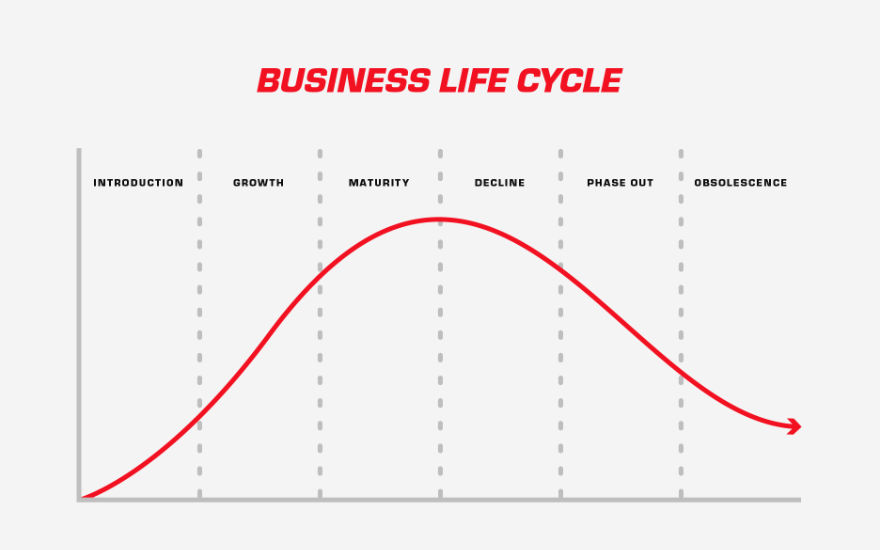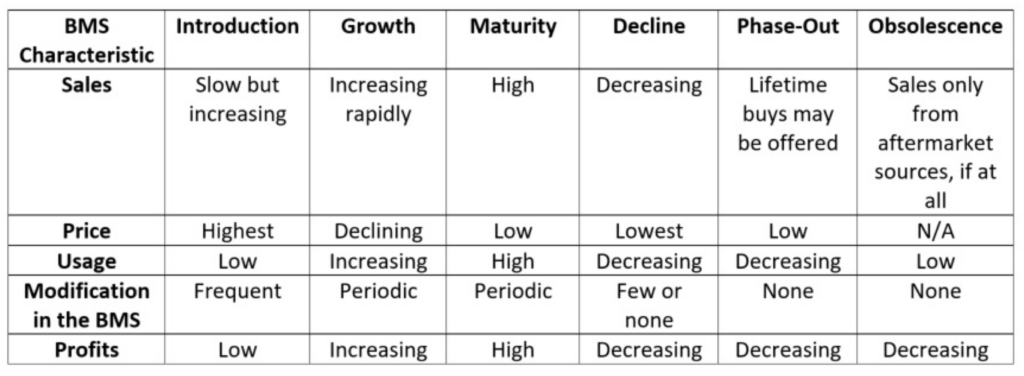BMS Lifecycle Stages
Most Burner Management Systems (BMS) pass through several lifecycle stages corresponding to the changes in their sales. The figure below shows a representative lifecycle bell curve based on typical BMS sales history data. It shows six common life cycle stages: introduction, growth, maturity, decline, phase-out and obsolescence.
The introduction stage is usually defined by high production costs driven by recently incurred design costs and low yield, frequent modification, low or unpredictable production volumes, and lack of specialized production equipment. Production costs, at this stage, may also be high. Early adopter customers who buy the product in its introductory stage tend to value performance over price.
The BMS market acceptance is outlined in the growth stage. Increased sales during this stage may justify the development and use of specialized equipment for production, which in turn improves economies of scale of production. Mass production, mass distribution, and mass marketing often bring about price reductions. This stage often consists of the largest number of competitors, as opportunity-seeking firms are attracted by the product’s profit potential and, strategic acquisitions and mergers have not yet taken place.
The maturity stage of the BMS lifecycle is characterized by high-volume sales. Competitors with lower cost of production may enter the market.
The decline stage is characterized by decreasing demand and generally decreasing profit margin. Towards the end of the decline stage, only a few specialized manufacturers remain in the market.
Phase-out occurs when the manufacturer sets a date when production of the BMS will stop.
Generally, the manufacturer issues a discontinuance notice to customers and provides a last-time buy date.
Discontinuance occurs when the manufacturer stops production of the BMS. The product may still be available in the market if the production line or product stocks were bought by an aftermarket source.
The table below summarizes typical BMS lifecycle characteristics for these stages.
If data from these BMS characteristics is plotted over time, we can obtain an estimate of the stage in the BMS lifecycle we are at. Thus, we can predict when obsolescence is likely to occur. For example, when it comes to BMS sales data analysis over time, we can predict it to be after 2.5 standard deviation of the preceding graph from the mean.
Profire Energy offers PF2100 and PF3100 BMS solutions. To learn more about our products and solutions visit www.profireenergy.com.

